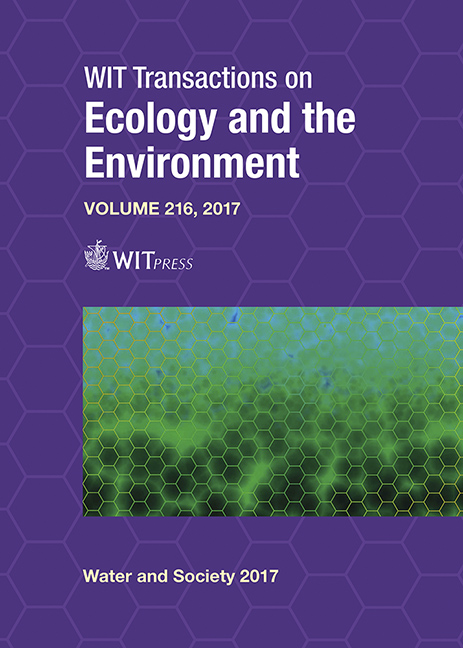LAKE WATER QUALITY FOR HUMAN USE AND TOURISM IN CENTRAL ITALY (ROME)
Price
Free (open access)
Transaction
Volume
216
Pages
8
Page Range
229 - 236
Published
2017
Paper DOI
10.2495/WS170221
Copyright
WIT Press
Author(s)
EDOARDO CALIZZA, FEDERICO FIORENTINO, GIULIO CAREDDU, LORETO ROSSI, MARIA LETIZIA COSTANTINI
Abstract
The lakes in the Italian region of Lazio, and in particular Lake Bracciano, have suffered due to reduced rainfall during the most recent years (1264.8 mm in 2014 vs 308.4 mm in 2015 and 883.6 mm in 2016 in Lake Bracciano). Moreover, Lake Bracciano exhibits both a direct water withdrawal (as drinkable water for the city of Rome and several other towns), and an indirect one, by the groundwaters, for agriculture. The 1.5 m water reduction, never observed in the last two decades, bared over 10 m of the littoral zone with the consequent exposition of gravel shores, trashes and reduction of the bottom areas involved in the denitrification process. This condition poses a threat to the ecosystem and to the human profits in term of eutrophication, healthy water loss, ship handling difficulties, touristic boats included, and tourism decline. In a previous investigation, we sampled the epilithic algae in the littoral zone of Lake Bracciano and estimated their nitrogen isotopic signature (δ15N). We highlighted the presence of diffuse organic and inorganic nitrogen inputs not intercepted by the wastewater collection system. These inputs, in synergy with water-level reduction, are able to undermine the ecosystem structure and health. In this paper, we show the nitrogen isotopic signatures, and their sources, as euros gained by parking meters for non-residents. We highlight the role of the touristic pressure not intercepted by the wastewater treatment plant in terms of δ15N increase during the most critical season (i.e. summer). The results show strong increases of euros gained and consequent δ15N signature increases (9‰ < δ15N < 17‰) from the end of June to the middle of August. We provide evidence supporting the need to adopt management policies to preserve the ecosystem services and related human health and earnings.
Keywords
Epilithon, nitrogen inputs, δ15N, volcanic lake





